How to Use the Glue-Resist Technique with Stain
Add an Easy Accent to a Plain Project
I’m sure you’re wondering what the heck the “glue-resist technique” is… You’ve seen it, and probably inadvertently done it. It is where you are building a masterpiece out of gorgeous wood, you’ve taken your time building – no errors, everything is square. It is time to apply the beautiful stain you’ve picked for this project and BAM!! There is a spot of glue right in the middle of this gorgeous piece you though you were completing to perfection!! Stain doesn’t hide it, nothing will! (It happens to me all the time!)
This can work to your advantage but only before staining… Otherwise, other creative measures will have to be used!
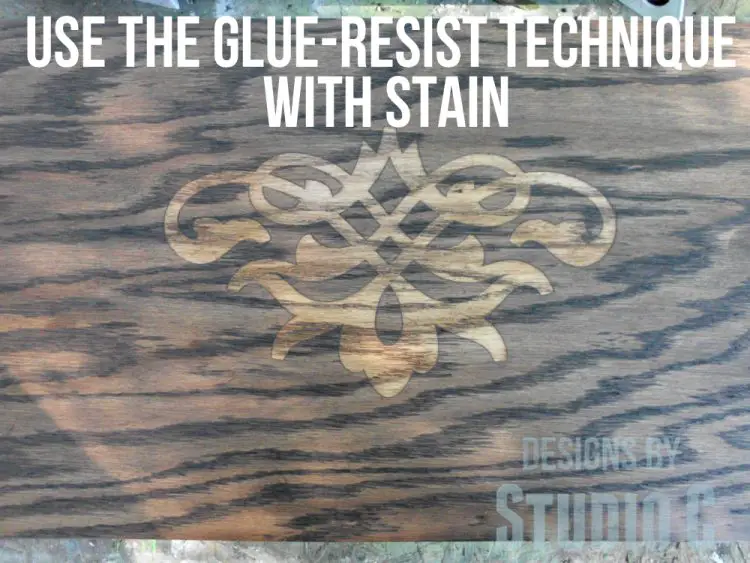
Anyway, I wanted to add a little flair to an oak plywood box I am building and thought this technique would fit the bill! Here’s how I did it:
First, I cut all of the pieces for the box and thoroughly sanded them. Pretty, huh? I used PureBond plywood.
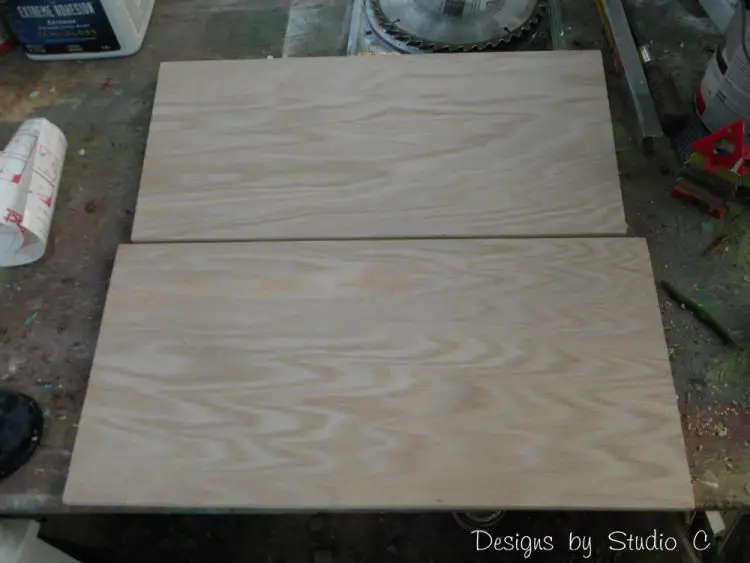
Then, I used my Silhouette Cameo to cut a couple of stencils out of vinyl. Regular stencils can also be used by taping them in place with masking tape.

I applied my stencils, then used wood glue to fill in where I didn’t want the stain to take to the wood. Any type of glue should work, even Mod Podge or Elmer’s School Glue.
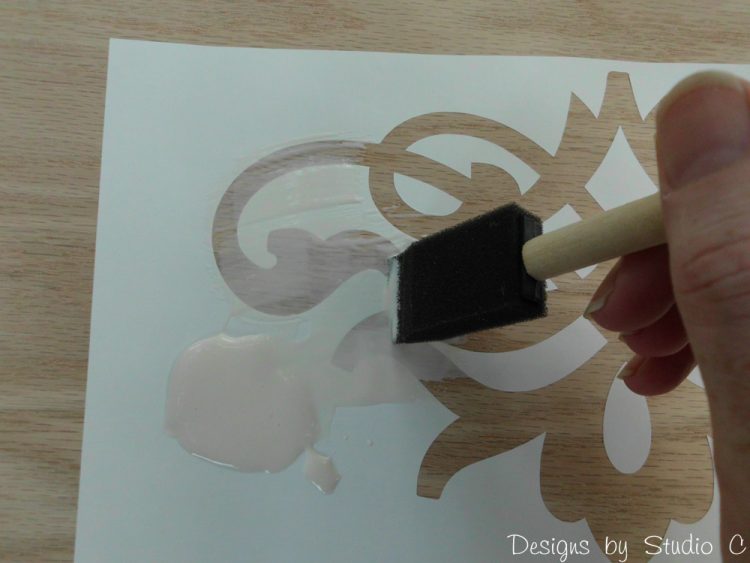
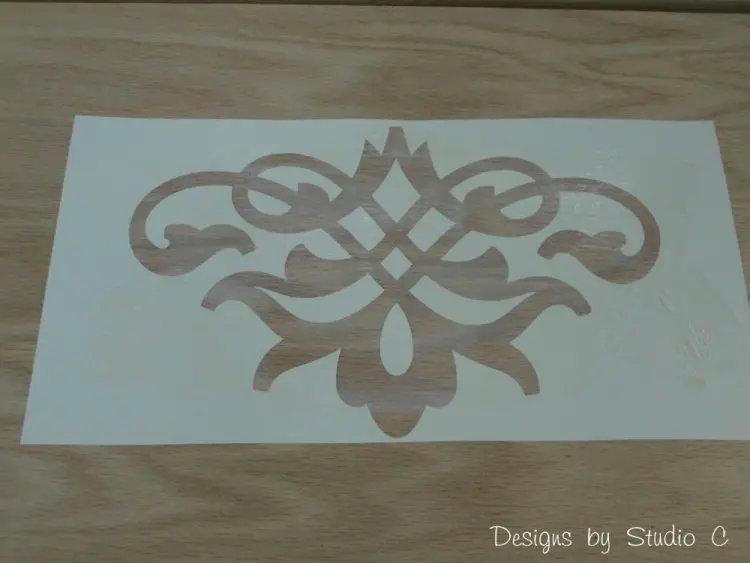
I let the glue dry, then removed the stencil. I stained my pieces using (my favorite!!) Rust-Oleum’s Ultimate Wood Stain in Kona.
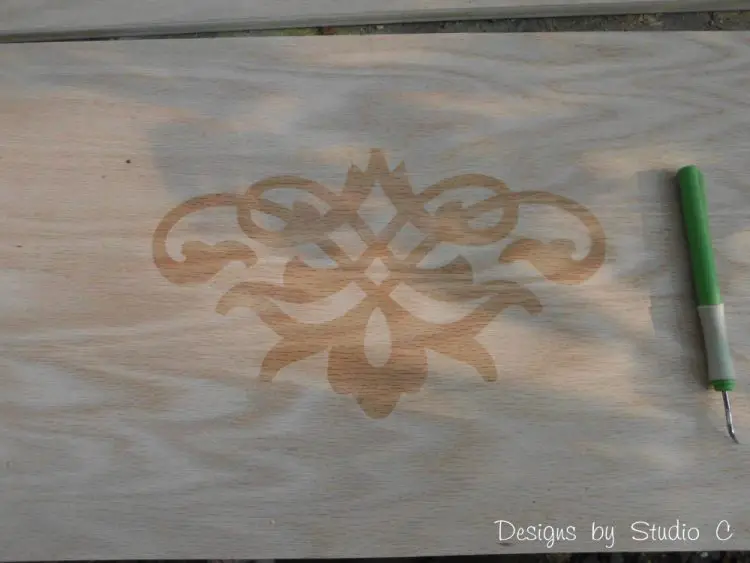
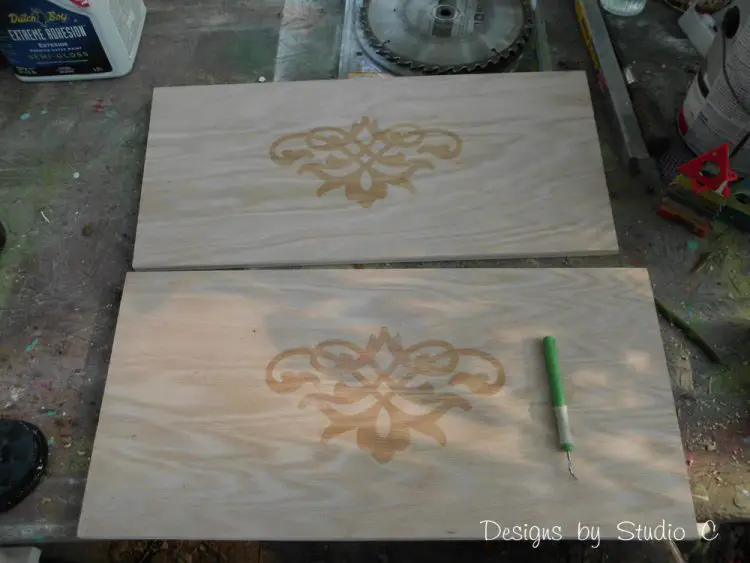
Check that out!! Isn’t that great?? Think of all of the creative things that you can use the glue resist technique with stain on – cabinet doors, drawer fronts, etc! I have plenty of plans listed on the site that this technique would work well with. Try it and show me what you did – cher {at} designsbystudioc {dot} com.
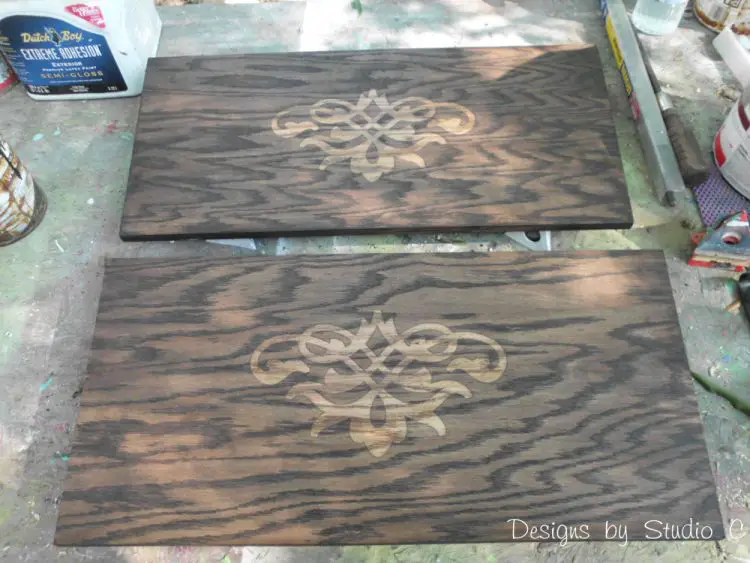
Disclaimer: All of the products I mentioned are products I own and use. I was not asked by any of the companies to make remarks about their products. All opinions are my own whether favorable or unfavorable. I do regularly stalk these companies!!

